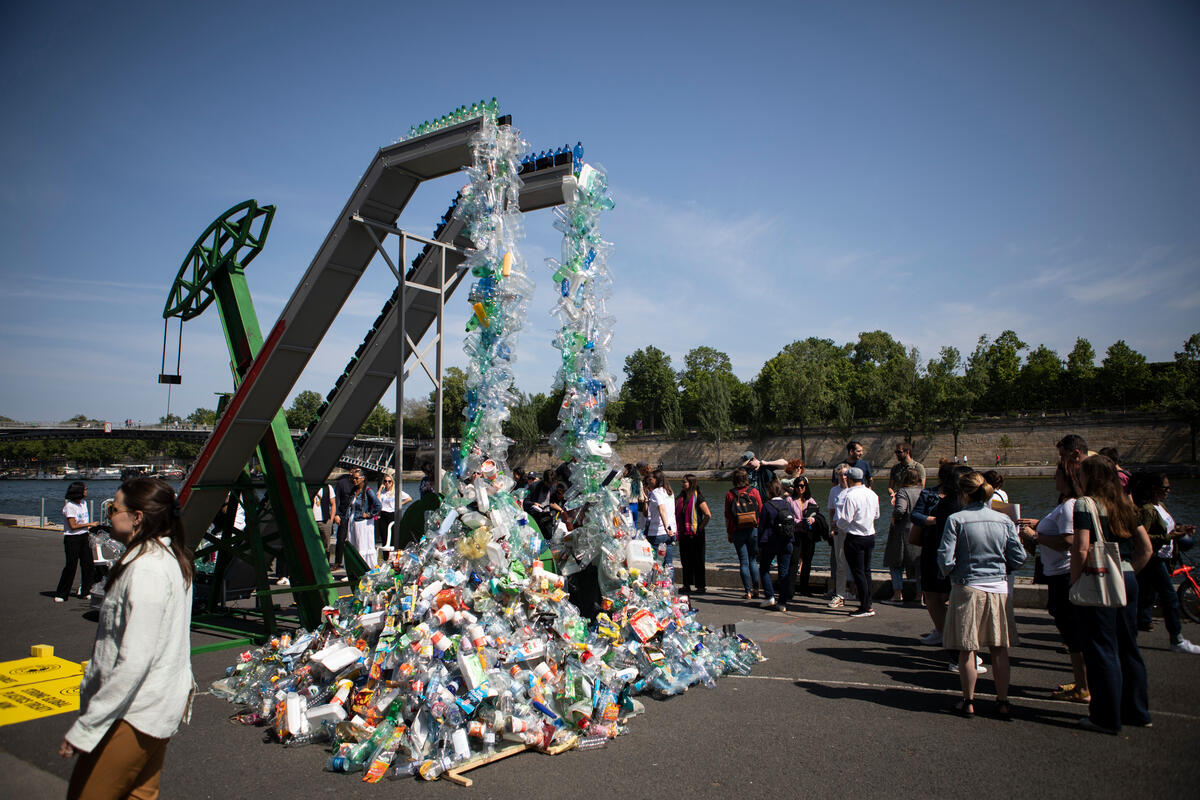Greenpeace worked with 14 research and expert teams to go deep into the mountains, lakeshores and streams for over a year, and accomplished the first ever broad yet in-depth investigation into microplastics on protected terrestrial wildlife. An astonishing investigative report, Plastic Island: A Study on Microplastic Pollution on Protected Animal Species in Taiwan and Their Habitats, was released on August 23, 2022, revealing the situation of six major protected species under the threat of microplastics.
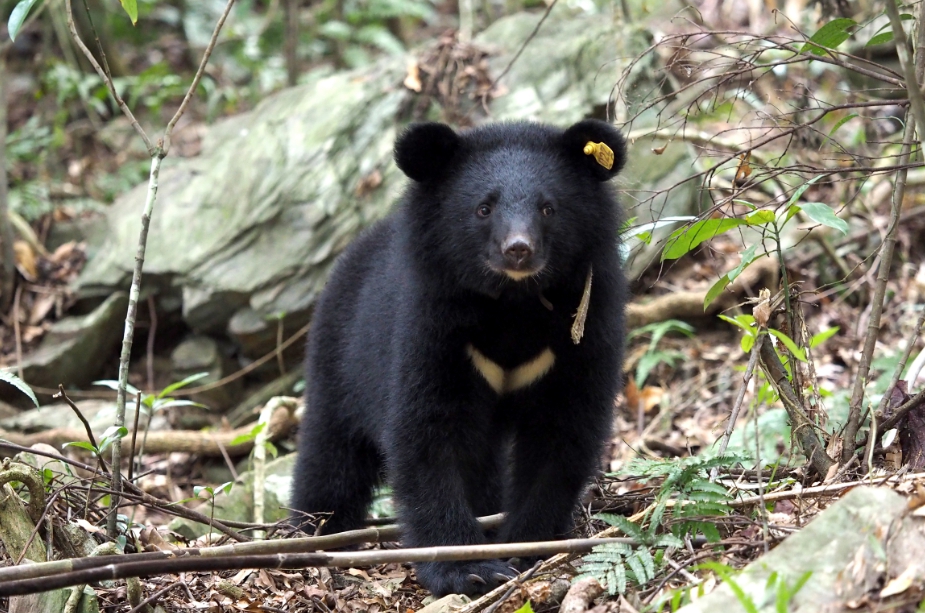
This article summarizes five key points from the report to take you to explore the survival situation of Formosan black bears, Formosan sambar deer, Kinmen Eurasian otters, yellow-throated martens, leopard cats and Formosan landlocked salmon under the plastic threats as well as the key findings of the research.
1. Plastics threats are real: Microplastics were widely detected in the samples.
The study was directed towards freshwater environments and terrestrial areas to further understand the situation of plastic pollution from a more comprehensive perspective. Greenpeace’s latest report confirms that the habitats of terrestrial protected animals in Taiwan have been contaminated with plastics, putting wildlife at risk of consuming microplastics.
The study collected the feces samples of five protected species across Taiwan as well as the drinking water in their habitats, and took the river samples from the habitats of Formosan landlocked salmon together with samples of their primary food (aquatic insect larvae). The samples underwent a series of treatments for microplastic extraction, and used a combination of stereomicroscopic examination, Nile Red staining, Raman spectroscopy and Fourier-transform infrared spectroscopy (FTIR) to analyze the amount, size range, form and polymer type of microplastics.
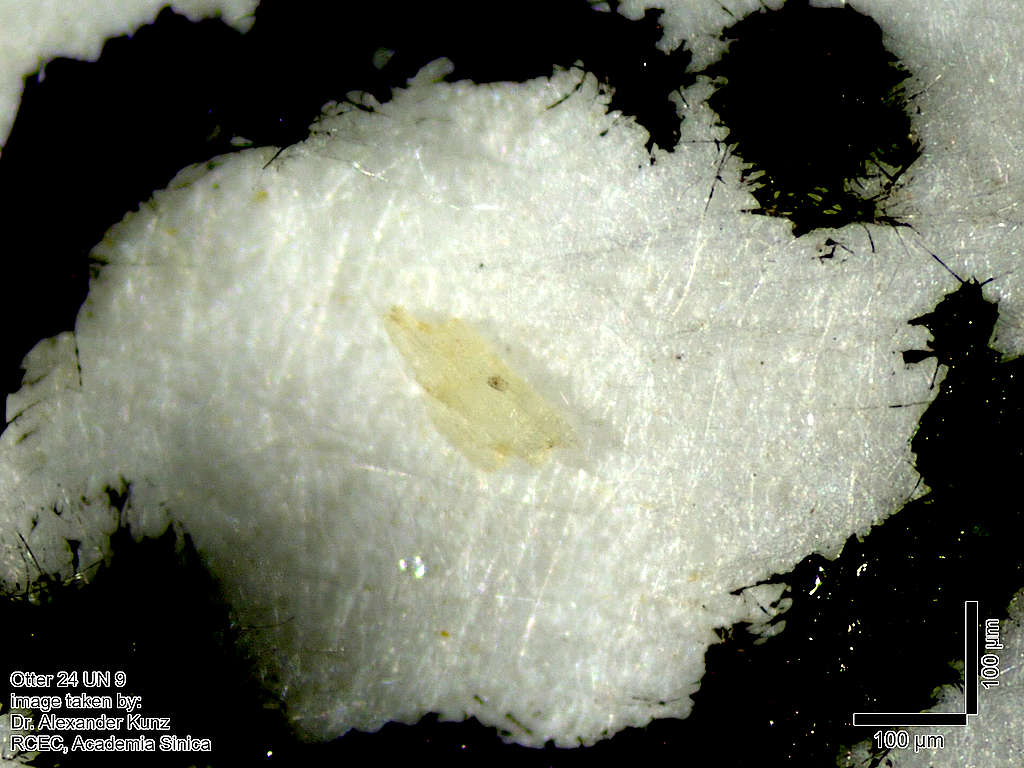
The results show that microplastics were widely detected in the samples, including feces of Eurasian otters and their habitat water, with a microplastics detection rate of 80%, while the average detection rate of water samples from Jiaming Lake even reaches 100%. Besides, the average concentration levels of microplastics in the samples of certain species are even higher than that of domesticated livestock’s manure as documented in some studies [1].
2. It is all in the feces: The feces of yellow-throated martens exhibit the highest concentration of microplastics.
Animal feces provide researchers valuable information of wildlife species, such as their diet, genetic diversity or diseases. Wild animals tend to be elusive and vigilant in nature. Instead of using a capture-recapture method, feces analysis causes less interference and disturbance. Collecting sufficient fresh feces samples across mountainous and lakeshore areas can be challenging, which requires expertise in feces identification, superior physical strength and ample knowledge in animal behavior as well as in habitat patterns.
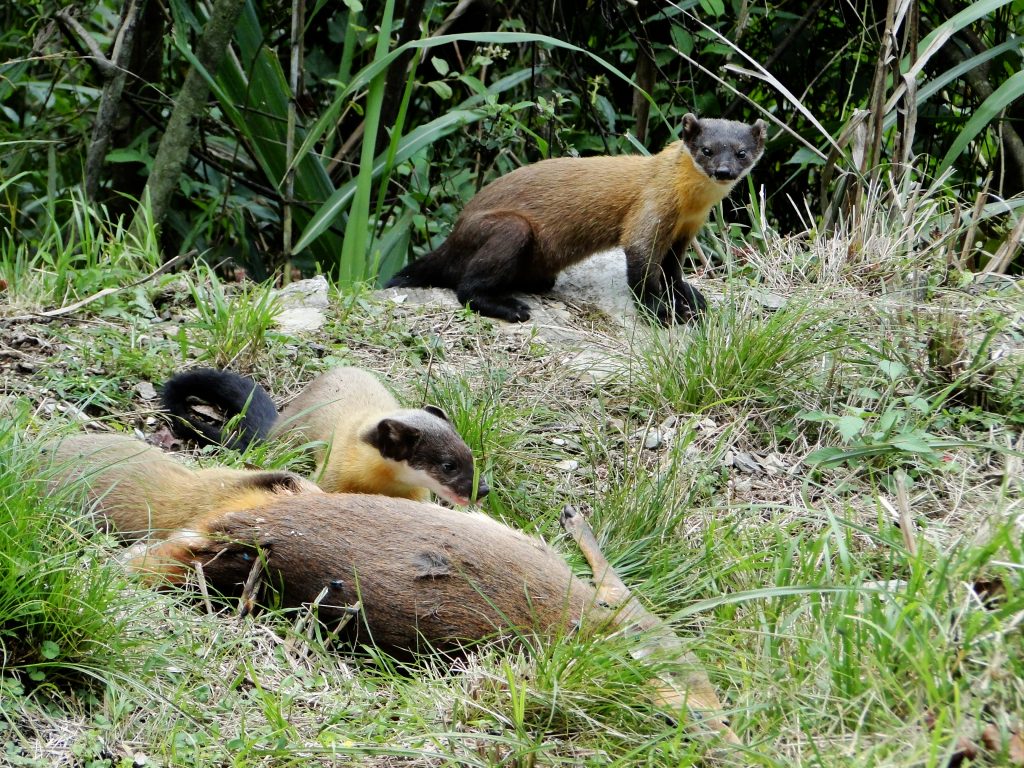
Apart from Formosan landlocked salmon, of the five protected animals examined, the feces of yellow-throated martens exhibit the highest concentration of microplastics (18.65 pieces/gram), followed by Kinmen Eurasian otters (2.72 pieces/gram), leopard cats and Formosan black bears, with Formosan sambar deer showing the lowest concentration level (0.09 pieces/gram). A total of 604 microplastic pieces were found in the feces samples of the above animals, with microplastic fragments being the most common form (44.6%), followed by spherical fragments (40.0%). The sizes of the microplastics range between 10.0 μm and 1,333.3 μm.
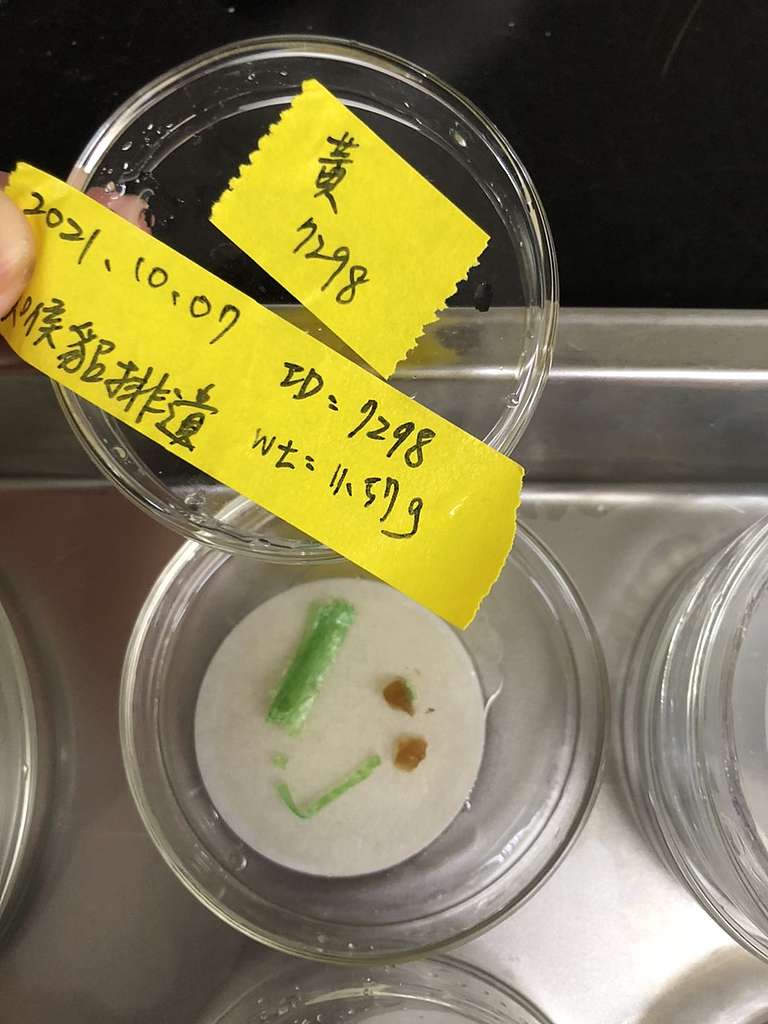
3. The concentration of microplastics in Kinmen water is higher than the world average.
The research team examined habitat water samples from five areas, including Jiaming Lake, Dafen, Lulin Mountain, Kinmen and Wuling. Water samples from Kinmen, where Eurasian otters inhabit, were found to contain the highest level of microplastic concentration (32.11 pieces/liter), which is higher than the world average [2]. The second highest concentration was identified in Wuling, followed by Jiaming Lake, Luling Mountain, with Dafen rounding out the list (5.78 pieces/liter). A total of 1,323 microplastic pieces were found in the habitat water samples, with spherical fragments being the predominant form (46.6%) followed by fragments (42.4%); the sizes of the microplastics range between 10.0 μm and 12,227.2 μm.

Qyawan Creek is the primary habitat of Formosan landlocked salmon, and samples of their main food source, aquatic insects, were collected and examined. The results indicate that each insect contains 2.77 microplastic pieces on average, showing microplastics are common in aquatic insects. It is evident that Formosan landlocked salmon face risks of ingesting and accumulating microplastics from both their habitat as well as their food chain.
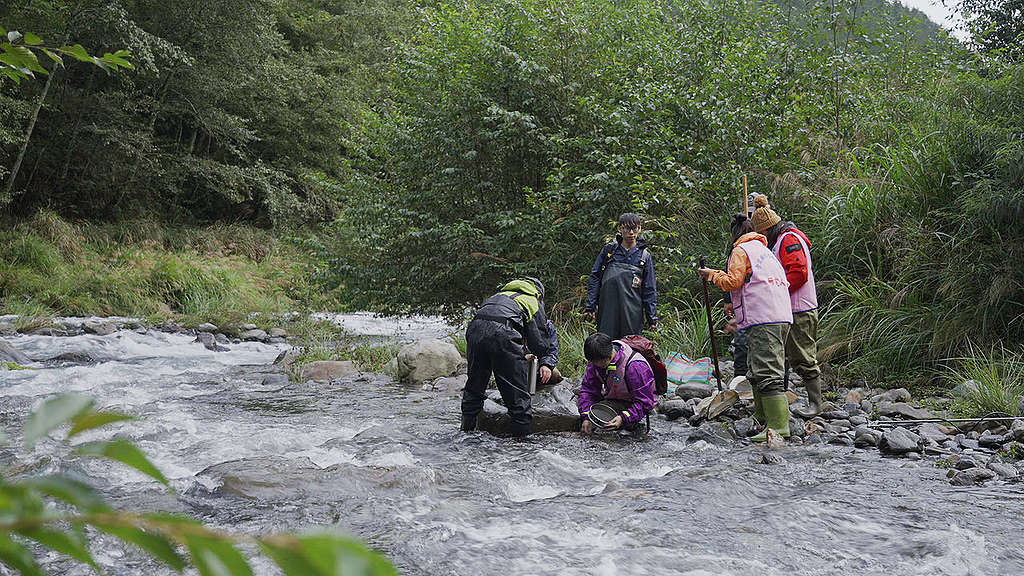
4. Microplastics are mostly found in fragments and spherical fragments.
Microplastics found in the feces and in the habitat water are mainly fragments and spherical fragments, different from the findings of past studies in Taiwan which concluded that fibers were the predominant form of microplastics in the environment. This new finding suggests that the sources and types of microplastics invading Taiwan’s natural environments are more diverse than was once thought, and it is very likely that these fragments and spherical fragments come from single-use plastics.
Furthermore, the study’s analysis across five sampling sites also shows that there is a positive correlation between the concentration of microplastics in the habitat’s water and the level of human activity in the area.
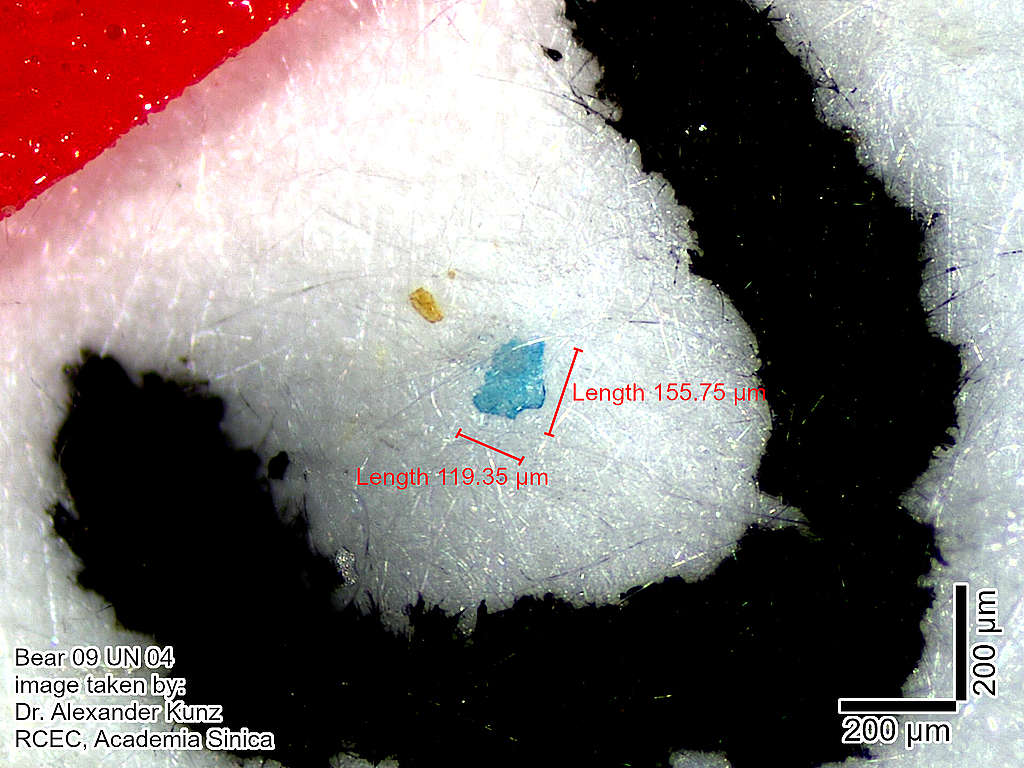
5. PP and PE are the most common types of microplastics.
Identifying polymer types helps determine the sources of microplastics in the natural environment so that management policies can be implemented. Of all the microplastics found across all samples of habitat water, feces and aquatic insects, the most common polymer types are polyethylene (PE) and polypropylene (PP), which happen to be the predominant materials for disposable tableware, plastic bags, cups and other containers and food packaging.
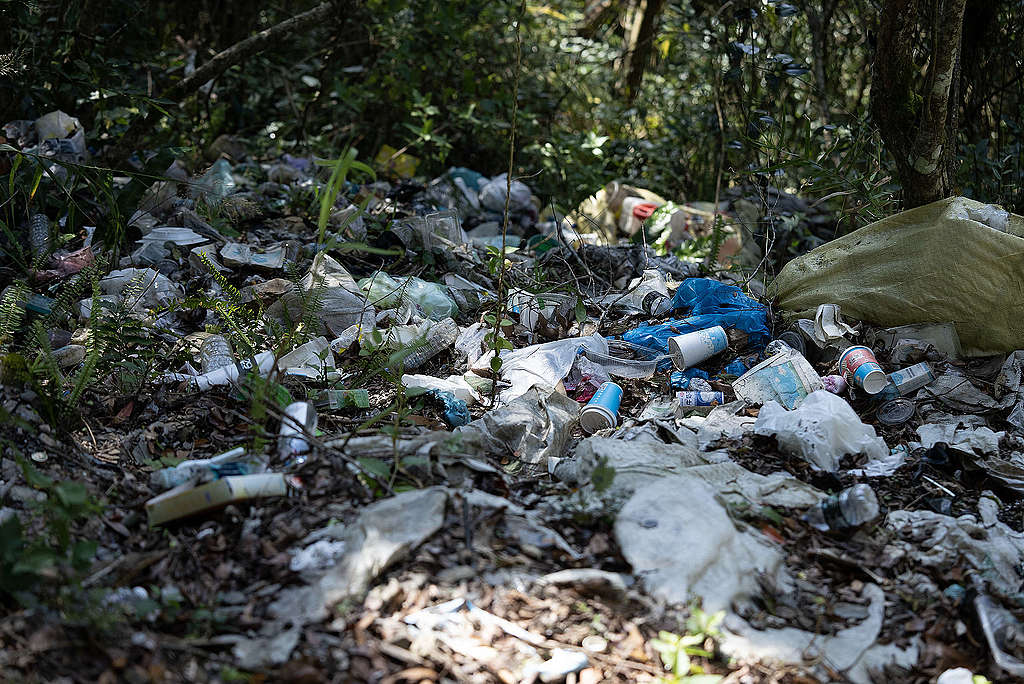
The survival pressure of protected species is rising, and it is urgent to reduce plastics at the source.
Formosan black bears, Formosan sambar deer, yellow-throated martens, leopard cats, Kinmen Eurasian otters and Formosan landlocked salmon are all protected species in Taiwan that are included in the Red list of Terrestrial Mammals/ Freshwater Fishes of Taiwan as they face an existential threat due to reasons such as habitat destruction, illegal hunting, and pollution. The widespread plastic wastes have gradually invaded the natural environment, placing greater survival pressure on wildlife species.
What are the possible survival risks from plastic pollution? After years of research, researchers on protected species in Taiwan have noticed that the increasing plastic wastes in the habitat would block the water passages Kinmen Eurasian otters used to go through, forcing them to detour and in turn increasing the likelihood of roadkills. Yushan National Park also pointed out that species like yellow-throated martens and Formosan black bears have changed their foraging behavior as more and more food wastes and discarded food plastic packaging appear in the natural environment.
The results of the study also show that the habitats of protected animal species in Taiwan have been contaminated with microplastics and prove that there are prevalent risks that these animals ingest microplastics in natural environments. However, more field research is direly needed in Taiwan to further understand the relationship between the migration of microplastics and urban wastes in the terrestrial ecosystem, and the potential health risks from heavy metals and other toxic chemicals coming along with microplastics.
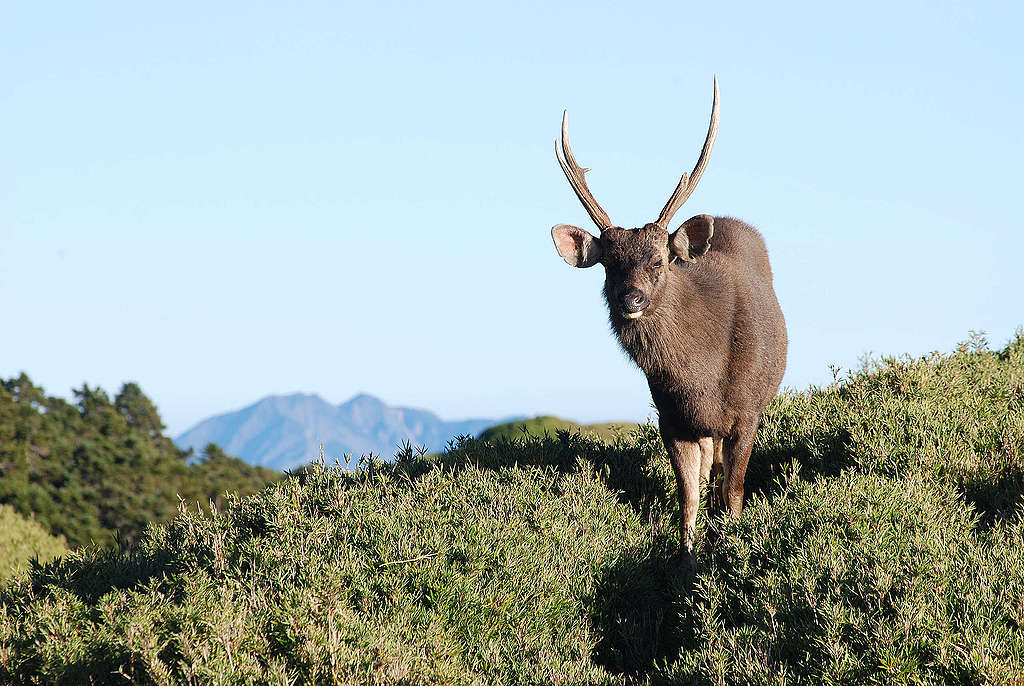
In general, relying solely on policies such as Leave No Trace (LNT) and recycling is far from enough to protect wildlife from plastic threats, as long as a large number of plastics are still manufactured on a daily basis with plastic packaging spreading from countless retail channels. Therefore, in addition to practicing plastic reduction in life, we can also work together to urge the government and retailers to cut down on plastics at the source and enforce plastic reduction policies from top to bottom, eliminating disposable packaging step by step. For example,
The government should develop a plastic reduction policy at the source:
● Developing a timetable for the elimination of single-use plastic packaging in wildlife conservation areas
● Regularly monitoring ecosystems for plastic pollution
● Developing a national timetable for reducing single-use plastic packaging and enacting regulations on plastic reduction in line with Global Plastics Treaty negotiation.
Retailer should modify their product sales model:
● Striving for reducing single-use packaging and transforming to a reusable model
● Halving the use of single-use plastics by 2025 and increasing the share of reusable packaging to 25%
● Committing to developing a timetable for giving up on selling and using single-use tableware and utensils

—
Updated on September 1, 2022:
After the release of the report, Greenpeace has received responses from government sectors. The Yushan National Park Management Office immediately demanded more stringent standards for their recreation service stations: bottled water and disposable tableware are no longer available for use or purchase. Apart from that, the EPA also announced on August 27 that as of September, they will start their trials at PX mart and Carrefour to offer packaging-free vegetables and fruits. This new approach is expected to be fully promoted at these two largest retailers across Taiwan.
Notes:
[1] Pérez-Guevara, F., Kutralam-Muniasamy, G., & Shruti, V. C. (2021). Critical review on microplastics in fecal matter: Research progress, analytical methods and future outlook. Science of The Total Environment, 778, 146395.
[2] Dusaucy, J., Gateuille, D., Perrette, Y., & Naffrechoux, E. (2021). Microplastic pollution of worldwide lakes. Environmental Pollution, 284, 117075.

